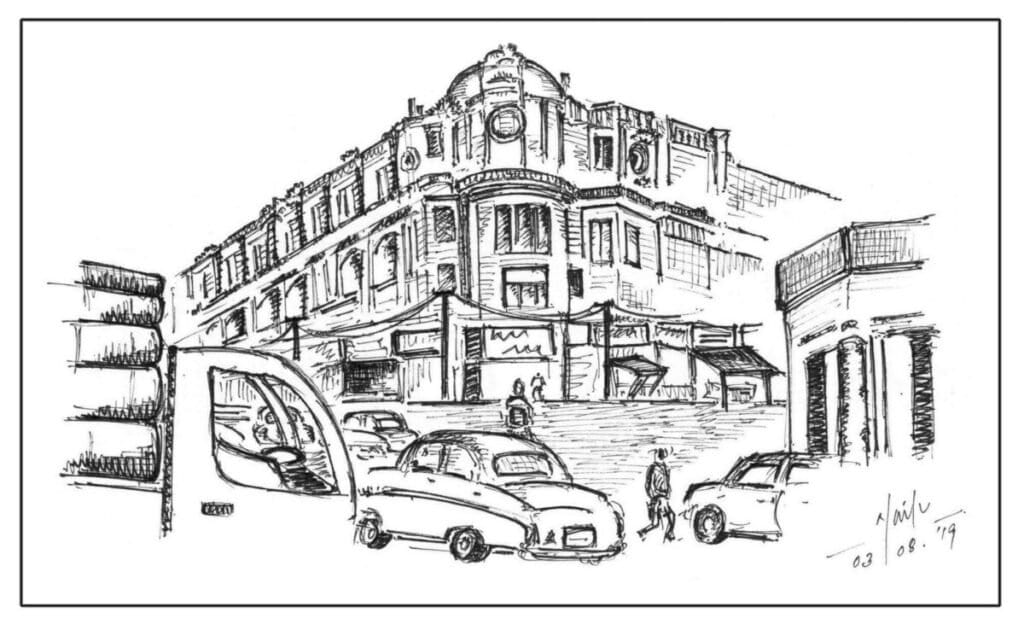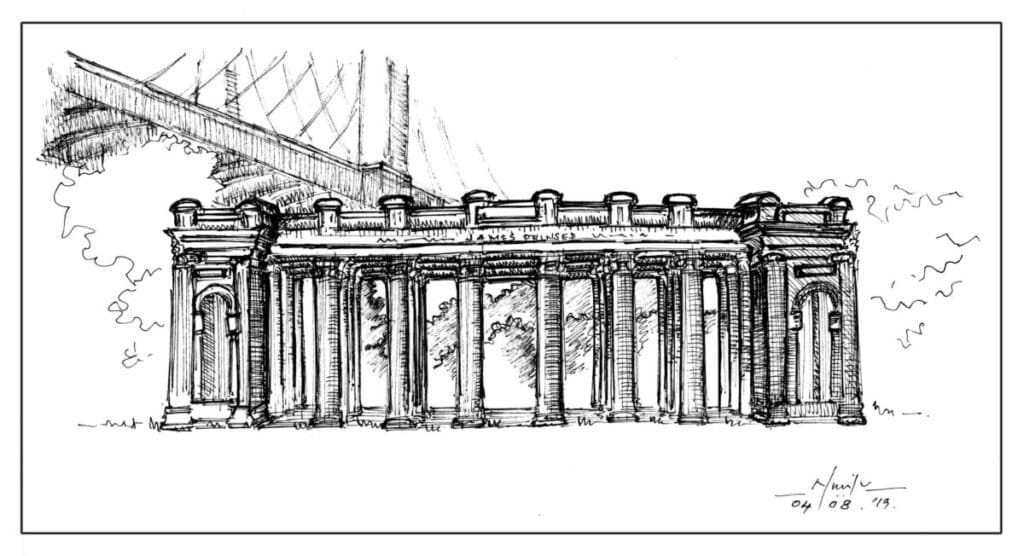Part #1: Perspectives
It has been around two years since that trip to Kolkata – a city that lives in history, legends and fables as much as it is rooted in the realities of the country. It was the first time ever that I was visiting this historic land and I was looking forward to it with all the excitement of a history student as well as a travel sketcher. We – me and my friend – read up on the city, including spots to visit, dishes to try and so on. While I do not want to spoil the end of the whole story, I can say this – it was absolutely unexpected.
Ever since I started trying to draw structures, perspective has been the biggest challenge for me. And I am pretty sure it will continue to be a challenge in the years to come too. When I look at the works by maestros there is still this one thing that beats me. How do they manage to translate what their eyes see in three-dimension – in terms of depth, light and spacing – into a two-dimensional plane? How is it that they don’t lose anything in translation!?
Anyone trained in art or the history of art would tell me the solution lies in the awareness and understanding of space, whereby simple techniques of positioning, relative size, overlapping etc. could be utilized to add depth to the two-dimensional image. I am aware of this. Yet, when I look at certain angles and views, I feel this knot inside me that I won’t be able to get it.
In one sense, this awareness is good, in that it lowers the expectation one has on the outcome. That this awareness hasn’t been holding me back from trying, is a good thing too. And that is how I eventually ended up trying this sketch.

As opposed to my recent method, I didn’t draw this on the spot. It was based on a picture that I had clicked, and I sketched it on my bunker bed at the travellers’ hostel that we had put up at. The flaws in the sketch could indeed be because I wasn’t visualizing or composing the frame in real. Using a photograph as a reference comes with its own set of challenges. Or maybe it is because of the troubles that I generally have with perspectives, as cited above.
At any rate, this is one of the iconic features I saw in the streets of Kolkata. I think I myself spotted similar street views across the city – bearing that colonial signature and reminding you of that bygone era.
To be more specific it was the turning where Chaplin Square Street meets Hogg’s Street, near KMC building.
Part #2: Subjects
I remember having read somewhere in the Sherlock Holmes stories by Sir Arthur Conan Doyle, where Holmes tells Dr John Watson – his trusted friend and associate – that the simplest and the most common-place cases were the most difficult ones to crack and that the peculiar and rarer ones were rather easy.
Admittedly, I am not as clear headed as Holmes or his creator. But in terms of sketching, I guess I could say this much: the simpler and seemingly easier looking structures present their own distinct level of challenge in that they do not present you with much details or decorations to be embellished in your own impression of the same. In that sense, it tests the basics of your art. Like Johan Cruyff said, “…playing simple football is the hardest thing there is.”
Why am I saying all this? Let me explain. I am aware of the fact that I am not a great fellow traveller. This is more so considering the fact that I would stop every now and then to peer at a building, a tree or whatever it is that amuses me at the moment. I would soon be weighing up several questions in my mind. Should I try sketching it? Will I be able to do it? Should I take up the challenge nevertheless? And once the balance tips ever so slightly on the positive side, I would fish my sketch-book and pens out (I have come to realize that finding a seat or shelter aren’t that important. Those days in Mumbai, where I found myself standing and sketching on a busy street under a hot sun has taught me as much). So out comes the sketch book. But when this is in a hot and humid city like Kolkata, you can guess the predicament of a fellow traveller. And trust me; I am totally apologetic about that scenario. But does that mean I will be cutting down on the sketches? Umm, no.

So that’s how me and my friend got into an argument of sorts – one of many, I admit – as to whether I should sketch the Princep Ghat or not. It was after all a simple structure with columns and arches. Where was the challenge in it? But within that simplicity, I believed, lies the real challenge. And just like that, I felt like sitting down and sketching the structure.
What I did not know then was the fact that the structure I saw and described as ‘simple’ exhibited a blend of architectural styles that emerged thousands of years ago. Thanks to the art history course I recently joined, I now know that those columns in the Princep Ghat follows the Ionic order of Greek architecture, which is immediately recognizable thanks to the opposing scrolls atop each column – known as Volutes. The structure also utilizes arches that were introduced by the Etruscans and popularized by the Romans in the ancient world, as well as Palladian style of porticos (named so because these extended but roofed porches were conceived and popularized by the Venetian Architect Andrea Palladio).
The fantastic part in the story however, was when the same fellow traveller got involved in my sketching eventually, and started giving me suggestions to make it better, asking me to add the bridge in the backdrop (Vidyasagar Setu). And I think it did help. I mean for as much as I quote Holmes and Cruyff, I can be quite lazy at times. Those suggestions got me to try harder. And the result is there for you folks to see.